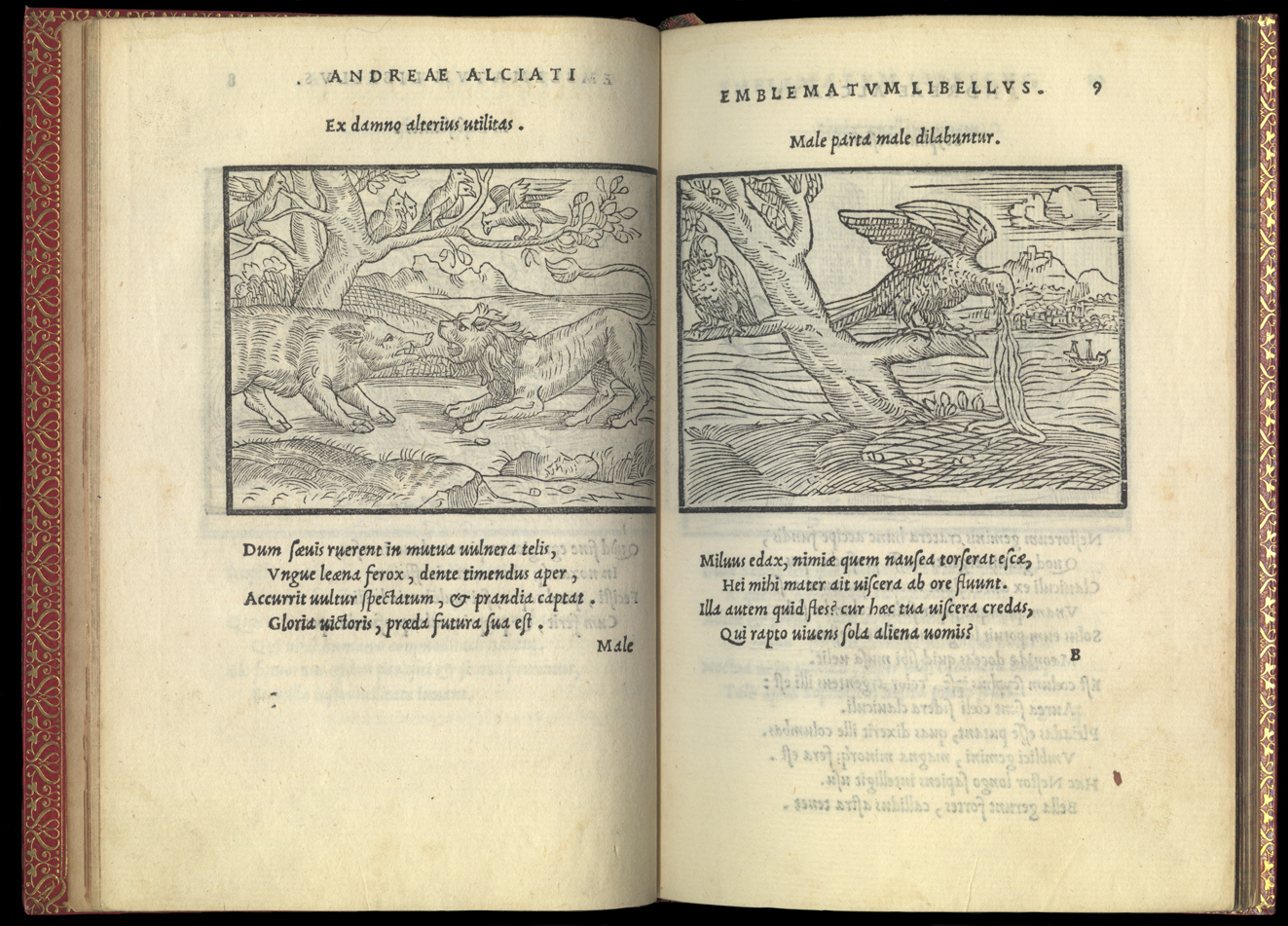7.02 Authors and Audiences
Unlike most literary genres, we know the precise date and personalities involved in the creation of the emblem book. Both the form of the individual emblem and the idea of creating a collection of them were devised as a literary recreation for his humanist friends (including a number of printers) by a renowned professor of law, Andrea Alciati (1492-1550). The moment was December of 1522. His collection went to print in 1531 without his consent. It was imitated almost immediately, and by the 1540s the new genre was established and flourishing entirely outside of Alciati's control and indeed in forms he had not imagined. Alciati's long, international career as literary editor and translator and as teacher of law at Avignon, Milan, Bourges, Pavia, Bologna, and Ferrara no doubt contributed to the successful marketing of his emblem book, which saw hundreds of editions in a dozen languages within his lifetime. (4)

We can also delineate a detailed intellectual context for the form. Emblems had many antecedents in Renaissance art, literature, and commerce, most importantly in heraldry and trademarking. But Alciati tells us he modeled his first emblems directly on the learned printer's marks of his day. He specifically mentions the mark of Aldo Manuzio, which, as he knew, had been explicated at some length by Erasmus in his Adagia. (5)

Alciati intended his collection for the amusement of a narrow circle of friends. He did not promote or supervise the earliest editions. Emblem collections for the entertainment and edification of a broader public were market objects invented by printers. The market drove further development of the form, which is analogous in this regard to successful collections of proverbs that often supplied the emblematists' mottoes. Both proverb collections and emblem books were complex, mimetic forms, derived from commonplaces in earlier literature and aimed at inviting the creation of additional commonplaces. The emblem book easily changed and grew well beyond the author's control because the form was composite; printed emblems required an artist to complement the work of the author. (6)
Emblems were offered as learning tools for children and adults alike. The published genre was not specifically school-oriented, but we know that painted and printed emblems often appeared in schools. Alciati composed his emblems in the context of learned rhetorical culture (by definition Latin-literate) but his emblems were translated and adapted for children within only a few years of their first publication. At the end of the sixteenth century devising emblems became part of the standard Jesuit school curriculum. By the middle of the seventeenth century emblems and emblematic thinking were almost universal in Europe. Education to this mode of thinking was by then a common part of the Latin curriculum and became formalized in several ways outside the Latin schools.
Like the textbook market, however, the emblem market allowed for many regional variations of taste and practice. Courtly and academic emblems were published throughout Europe. The form was rapidly adopted by Christian evangelists of many denominations, but secular emblem books also continued to be made in some markets. In Protestant Europe, emblem books were published specifically for a children's market, giving rise to an early genre of children's literature (as distinct from textbooks for school use). But emblem books for children, whether in or out of school, were never common in Italy. And the emblem book did not have a fixed place in the curriculum on either side of the Alps. American publishers today refer to some such books as "ancillaries," that is, books that can be built into certain curricula as designed by educational publishers but which are also marketed and read separately. It is useful to imagine the emblem book having this function in early modern schools too, as a supplementary teaching tool that some teachers integrated closely into their curricula, while others did not use it at all.
NOTES
- Open Bibliography
- (4) Manning 2002, 42-45 ; Wolkenhauer 2002, 55, 207-208; Grendler 2002a, 439-443; Alciati, ed. Daly and Callahan 1988; Alciati 1953, 45-47.
- (5) II,i.1. The first version was penned about 1508; it appeared in extended form in the 1520 Froben edition of Erasmus, which Alciati surely knew. (He lists Froben's mark among his inspirations.) Later, Erasmus added a diatribe against printers who did not live up to the high standards of Aldo. See Wolkenhauer 2002, 165-185.
- (6) Scholz 1993, 150-151; Jeanneret 2001, 212-214; Coppens 2005, 34-37.